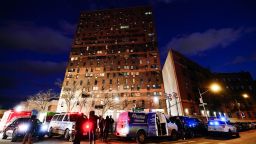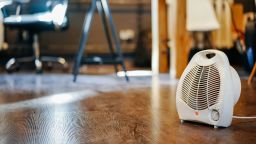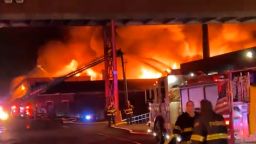When the 19-story Twin Parks North West building in the Bronx turned into a deathtrap one week ago, nearly all of the 17 people who perished – including eight children – were immigrants from Gambia and other West African countries.
“They were our aunts and uncles and others who were coming to our food pantry since the pandemic,” said Ajifanta Marenah, secretary of the Gambian Youth Organization, just blocks from the site of last Sunday’s fire. “This is a community of people who have to work two or three jobs to make ends meet.”
For over a century, the worst fires in New York City history have claimed the lives of immigrants.
Sunday’s fire was the city’s deadliest since 1990, when arson at an unlicensed Bronx nightclub killed 87 people, mostly Honduran and Central American immigrants.
The Happy Land Social Club inferno – about a mile from the Twin Parks North West building – was the deadliest in the city since the 1911 Triangle Shirtwaist Company fire in Manhattan, where 146 young mostly Jewish and Italian seamstresses perished.
These historic fires parallel immigrant life in the city.
“Those who are most vulnerable, and least valued, live and work in precarious situations often under conditions where legal and regulatory enforcement is lax,” said Elissa Sampson, a lecturer in Jewish studies at Cornell University.
“The law, that is building and fire code, is insufficient as well as often poorly enforced, and this is the case today in the Bronx and it was as well in the Triangle Shirtwaist factory.”
All victims died of smoke inhalation
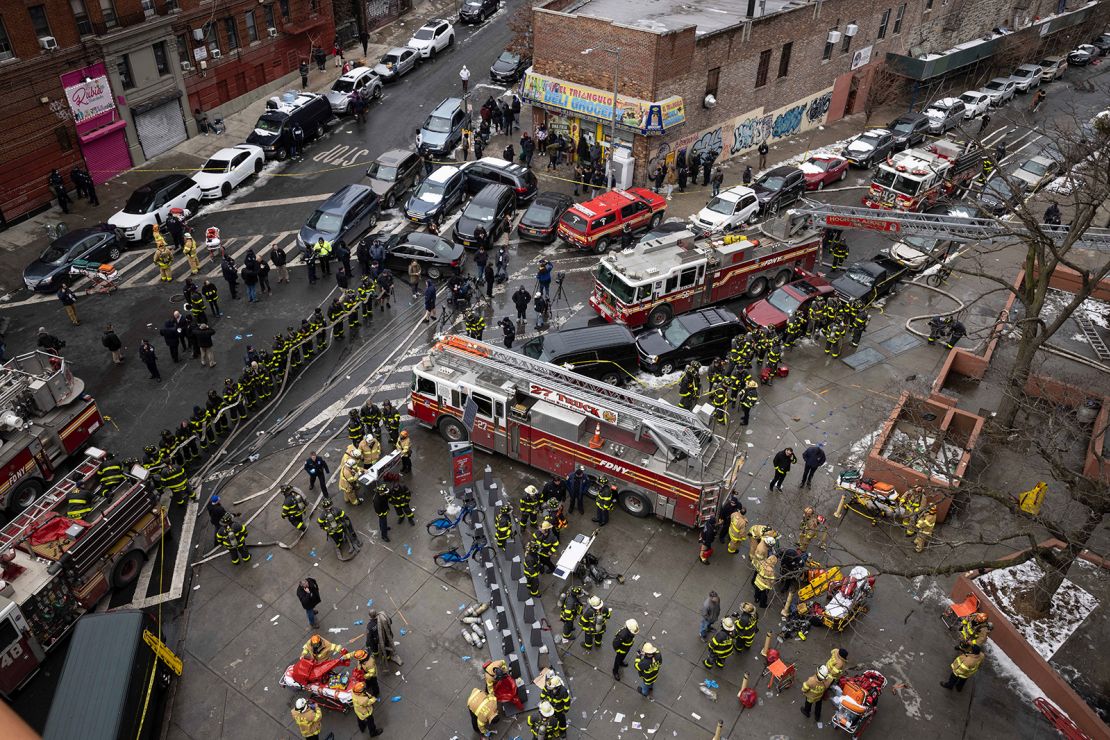
Outside a middle school next to the fire-damaged building, a makeshift memorial emerged with flowers, candles and photos of those who died and others still in hospitals.
The dead included Haji Dukary, 49, his wife, Haja Dukureh, 37, and their three young children. Fatoumata Tunkara, 43, and her 6-year-old son, Omar Jambang. Fatoumata Drammeh, 50, and three of her children. There was Seydou Toure, 12, and 5-year-old sister Haouwa Mahamadou. The youngest victim was 2-year-old Ousmane Konteh.
Across from the school, classmates put up a poster-sized photo of Seydou with handwritten messages. A cardboard box on the side of El Triangulo deli grocery shielded candles from the cold wind.
All 17 victims died of smoke inhalation, according to the city medical examiner. A communal funeral was to be held at the Islamic Cultural Center of the Bronx on Sunday morning, according to a board member.
“A lot of essential workers come from our community,” said Marenah, 24, referring to the people who continued to show up to work during the Covid-19 lock downs.
“We have taxi drivers and construction workers. There are teachers, social workers and people at nursing homes.”
The storefront Gambian Youth Organization filled up last week with donated clothes, boxes of baby formula, toys and other items for the displaced.
“There were parades for essential workers,” said Maimuna Gassama, 24, a volunteer at the organization. “People talk about how immigrants are the backbone of the country and then when it really comes down to their needs… they fall through the cracks.”
The fire started when one of several space heaters that had been running for days malfunctioned in a third-floor duplex, a fire official told CNN.
The self-closing front door of the unit failed to close, according to fire officials. The fire-fueled smoke spread upward to the 15th floor, where another door failed to close automatically. Victims were found in stairwells on every floor, many in cardiac and respiratory arrest.
The building’s doors and reports of malfunctioning smoke alarms are a focus of the investigation, Fire Commissioner Daniel Nigro said. Residents of the 120-unit building said fire alarms often malfunctioned.
There were at least four heat-related complaints and one complaint about a defective self-closing door reported last year to the Department of Housing Preservation and Development, according to the agency. Some violations had been corrected, HPD records showed.
‘The forgotten borough’
Mamadou Wague said the sound of his children screaming jolted him awake Sunday morning.
“Fire! Fire!”
Wague lives on the third floor with his eight kids, who range in age from 6 months to 18 years old. The resident told CNN affiliate WABC the fire started in his duplex apartment.
Wague yelled for everyone to get out. He then returned to get his 8-year-old daughter, who was still in the apartment.
The heavy smoke prevented his family from fleeing the building. He said they waited in a neighbor’s apartment, putting wet towels under the doors, until firefighters arrived 15 to 30 minutes later to escort them down the stairs.
Wague, an Uber driver who emigrated to the United States from Mali in 2000, said the fire burned all his family’s belongings. They are staying with friends in the Bronx.
Vercie Pope, 47, a subway conductor, said she lives with her family a few doors down on the same floor. She was on a break at work Sunday morning when she noticed she had missed several calls and text messages from her children and her sister.
Firefighters broke down the door to her three-bedroom apartment to rescue her five children and 1-year-old grandson, Pope said. She was later reunited with her family at the middle school next door.
Pope, who is temporarily staying at a Bronx hotel, said the building has had problems with maintenance. She said her stove caught fire about a month ago. It was repaired a week and a half later. At times, she said, the heating is inadequate.
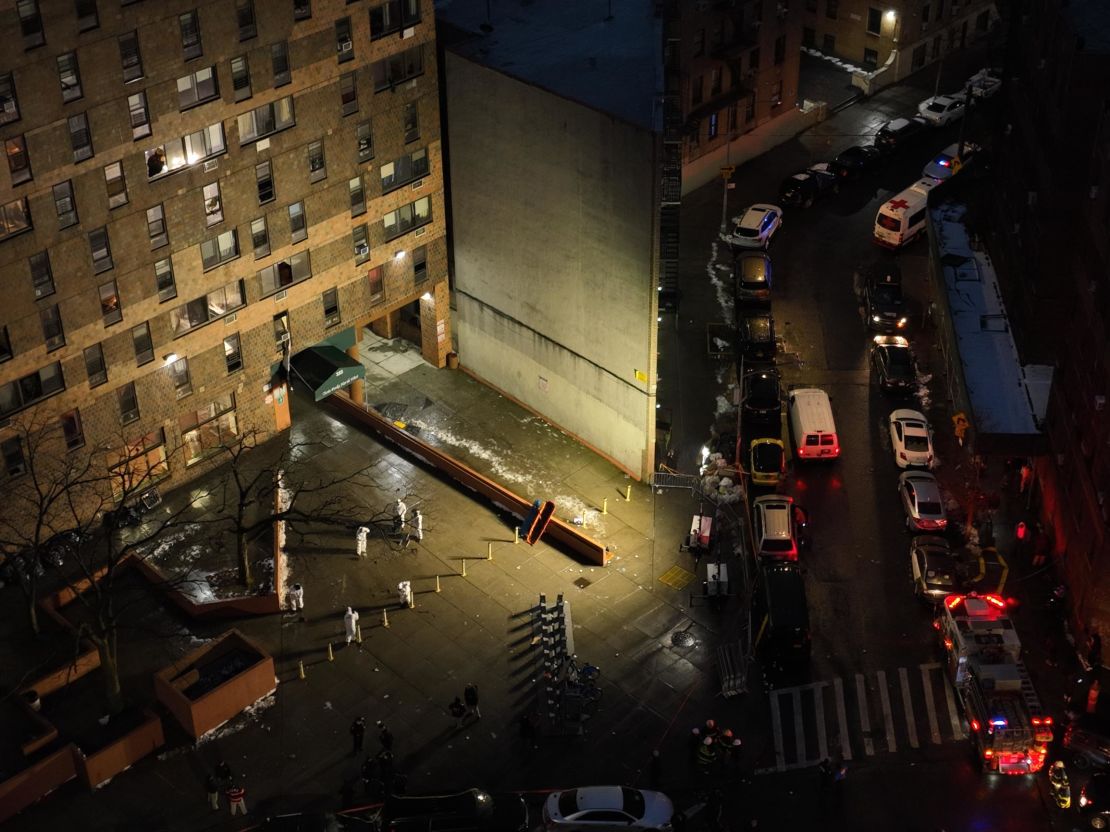
“You shouldn’t have to go to sleep wearing sweat clothes or hoodies, or socks and a jacket,” said Pope, who has lived in the building 26 years.
Nigro said the heat in the building was on at the time of the fire.
Pope said her apartment was declared unlivable and that she will start looking for a new home because her hotel voucher runs out a week from Monday.
“I feel the Bronx is the forgotten borough,” she said. “We’re the last borough… It’s mostly, you know, African immigrants, black people, Latino people.”
‘There’s a lot of lessons to be learned’
In fact, an analysis of fire dispatch data by the non-profit news site Documented found that fires like the one last Sunday occur more often in Black and Hispanic communities. And half of the community districts with the 10 highest number of fires from May 2020 through May of this year have immigrant populations above the city’s average, the analysis showed.
“There’s a lot of lessons to be learned about why this is happening in … low income communities and communities of color,” New York Attorney General Leticia James said Tuesday night at a vigil outside the Bronx building.
“There’s a lesson to be learned about the neglect of government … and there’s a lesson to be learned about why this continues to happen in this corner of the Bronx.”
Tenants and relatives of the victims in Sunday’s fire have filed a class-action lawsuit against the current and previous owners of the building, which was built in 1972, according to court documents. They are seeking $2 billion in damages, according to the documents.
The city and various agencies were also given notice of a separate class-action lawsuit seeking $1 billion in damages for alleged negligence in enforcing building codes.
“This was a horrific tragedy and too many lives were lost,” New York City Law Department press spokesman Nicholas Paolucci said in a statement. “There is an active investigation into this tragic incident. We’ll review the claim.”
Bronx Park Phase III Preservation LLC, which purchased the complex in 2019, said in statement: “We are devastated by this terrible tragedy and are cooperating fully with the Fire Department and other agencies as they continue to investigate.”
The building owners did not specifically address the lawsuit.
Attorney Robert Vilensky said he represents 22 plaintiffs in the lawsuits but expects others to join in the litigation.
The lawsuit alleges the building owners were negligent, including failing to ensure smoke detectors were working, failing to provide adequate heat, failing to have an intercom system and failing to have a sprinkler system.
‘It’s different people but the same situation’
Just over a mile from the Twin Parks North West building, the names of the victims of the March 25, 1990, Happy Land Social Club fire appear on a memorial.
The 87 victims were mostly immigrants from Honduras and other Central American countries. Only six people survived the fire ignited by the coat checker’s jealous lover, who had been kicked out of the club earlier that night. The illegal social club was a deathtrap, officials said at the time. Some exits were shuttered. There were no sprinklers. The city responded by cracking down on the inspection and licensing of illegal clubs.
One survivor, Ruben Valladares, 58, said he has lived in Florida since 2000 and now works for an offshore oil and gas company. He was the DJ the night of fire. He spent nearly a year in hospitals recovering from burns to half his body. His head and neck are still scarred. He said hewas now battling Covid-19 and awaiting his second shot of the vaccine.
Sunday’s fire brought flashbacks, Valladares said.
“You never forget,” he said. “It marks your life but you must move on. I remember people falling to the floor and screaming – like it was yesterday.”
Valladares believes survivors of the latest fire and relatives of the victims will suffer in the same way.
“It never goes away,” said Valladares, who is Garifuna – a Central American people who descend from runaway African slaves and Caribbean Indians and were forcibly relocated to the coasts of Honduras, Nicaragua, Guatemala and Belize. “You try not to think about it. It’s never easy.”
Dilcia Pineda, 56, was pregnant when her partner Marvin Doubleday, then 22, perished in the Happy Land fire, along with four of his friends. She now lives in South Carolina, where she works as a certified nurse assistant. She too was moved by the recent tragedy.
“What have we learned?” the Honduran immigrant asked. “We’re living through this all over again. Nothing changes. It’s different people but the same situation.”
Pineda said that after the fire she spent nearly her entire pregnancy weeping on the couch in her old apartment.
“My only advice to survivors and relatives of the victims would be to get psychological help,” she said. “I didn’t do it and I’m still paying for that. I went to therapy twice. The therapist cried more than I did. I stopped going. I was ignorant. Now I regret it.”
Pineda still remembers arriving at the Happy Land after the fire. Bodies were lined up on the street. The smell of smoke brings it all back. Her son, named after his father, still breaks down at times.
“He was never happy,” she said of her son, now a postal worker in Florida. “He was always asking, ‘Why did I not get to know my father?’ His childhood was sad.”
‘The fire that changed America’

The Happy Land inferno occurred 79 years to the day after the fire at Triangle Shirtwaist factory in the Greenwich Village neighborhood of Manhattan. The doors to stairwells and exits at the sweatshop were locked. Many victims, mostly young and low-paid immigrant women, jumped to their deaths from the upper floors.
Sampson, the Cornell lecturer who has studied the history of the fire, said the tragedy became known as “The fire that changed America.” New York state passed more than 30 fire and labor laws in its aftermath.
Sampson believes last Sunday’s fire can galvanize tragedy and mourning into action that improves the lives of the city’s most vulnerable residents.
“If it’s scary to think about a relatively recent 1972 building being a fire trap, we can extrapolate to understanding the risk inherent in the even older housing stock that characterizes most of the Bronx,” she said.
Ray Bromley, a professor emeritus of geography and planning at the State University of New York at Albany, said neither the Happy Land nor last Sunday’s fire will have the same impact as the 1911 inferno. The city did increase investigations of illegal clubs after the 1990 fire, he noted.
“You can’t get that in a social club,” he said. “People sitting around at 2:40 in the morning, drinking beer and listening to music, don’t inspire the sort of social crusading that workers dying on the job because their workplace was locked and they had to jump out of the window of the tenth floor.”
Bromley, who studied the effects of the Happy Land fire, added: “Poor people’s fire tragedies they’re big news for a very short time and then they fade away. By the time we get to the Super Bowl, this will be gone.”
The Triangle fire victims are remembered with anniversary ceremonies on the corner where the building still stands as part of New York University. The intent is “honoring the dead and changing conditions for the living,” Sampson said.
There is also a project called Chalk, with volunteers visiting the places where each of the 146 victims lived, mostly in the East Village and on the Lower East Side. On the pavement, the names and ages of those who died are chalked. Passersby have written messages such as “Immigrant Lives Matter” and “Never Forget Happy Land,” referring to the 1990 fire, according to Sampson.
“Usually the understanding of what’s at risk today comes out of the understanding of what happened in the past – the sense that justice was not served,” she said.
“This is a moment of crisis for the Bronx and yet most of New York’s essential workers come from there, most of its immigrants live there. It has the most affordable housing stock – and the least well maintained.”
‘Trying to figure out what’s next’
The hilly streets that surround the Twin Parks North West building are dotted with African and Caribbean markets, hair-braiding and halal shops, delis and bodegas.
Down a winding street from the building and past the middle school, an African discount store sits next to the Masjid Al-Fawzaan mosque, one block from rattling suburban-bound commuter trains. Relatives of the dead and survivors have been seeking comfort there.
Gambian Ambassador Dawda Docka Fadera traveled to New York last week to hear the “horrific stories” of survivors that have shaken their small country of two million people.
“A lot of Gambians who came here, they stayed there before they moved anywhere else,” Fadera told CNN. “This was kind of a first port of call, this building. It’s a building Gambians have a lot of attachment to.”
The US is home to a diaspora community of about 8,000 Gambian immigrants. The hulking Twin Parks North West tower had once been a beacon of hope for so many of them.
At the storefront Gambian Youth Organization up the street from the building there was little room left to accommodate the donations of clothing and other items.
“The community is mourning,” said Gassama, the volunteer, “and everyone is really trying to figure out what’s next, but there does have to be a level of accountability.”
CNN’s Mark Morales, Tami Luhby, and Catherine E. Shoichet contributed to this story.

